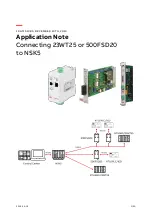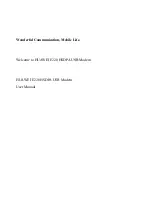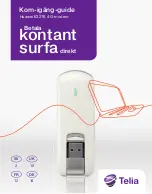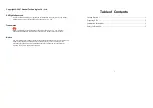
2.0 GENERAL INFORMATION
Thank you for your purchase of this Patton Electronics product.
This product has been thoroughly inspected and tested and is
warranted for One Year parts and labor. If any questions or problems
arise during installation or use of this product, please do not hesitate to
contact Patton Electronics Technical Support at (301) 975-1007.
2.1 FEATURES
• Extends parallel communication to 2000 feet
• Requires no AC power or batteries
• Operates over a single twisted pair
• Allows devices to communicate in “real time”
• Can be configured for BUSY or ACKNOWLEDGE
flow control methods
• Compatible with most printer sharing devices
• Transmits DC power over the line to compensate for low power
parallel printer interfaces
• DB-25 or Centronics parallel connections
• RJ-11, RJ-45 or terminal block line connections
2.2 DESCRIPTION
The Patton Electronics Model 1225 ParaLink
TM
parallel short
range modem allows a PC and a parallel output device (printer, sharing
switch, etc.) to communicate at distances to 2000 feet over a single
unconditioned twisted pair. Supporting parallel data rates to 5 Kbytes
per second (serial rates to 40 Kbps), the Model 1225 derives all
necessary operating power from the parallel interface—no AC power or
batteries are required.
The Model 1225 always works in pairs: A
transmitter unit is
plugged into the PC parallel port and a
receiver unit is plugged into the
output device parallel port. The connection between them is serial, and
functions at speeds high enough to allow “real time” parallel
communication between the two parallel devices. The Model 1225 has
two unique features that allow it to operate in a wide variety of parallel
applications: First, the Model 1225 transmitter is able to send DC
power down the line to the receiver in order to compensate for low
power parallel printer interfaces. Second, the Model 1225 can be
configured for either BUSY or ACKNOWLEDGE flow control methods.
The Model 1225 receiver is available with either a DB-25 or
Centronics parallel interface (transmitter has DB-25 only). Line
connection options are RJ-11, RJ-45 or terminal block with strain relief.
3
3.0 CONFIGURATION
The Model 1225 is designed to be easy to use. There are no
internal jumpers or DIP switches to set, so there is no need to open the
case to configure the unit (you may need to open the case for wire
connection—refer to Section 4.0).
The only configuration necessary for operation is proper setting of
the external BUSY / ACKNOWLEDGE switch. The diagram below
shows the location of the BUSY / ACKNOWLEDGE switch on the PC
board, as well as the location of the terminal block.
3.1 SETTING THE BUSY / ACKNOWLEDGE SWITCH
For your convenience, the Model 1225 has an externally
accessible BUSY / ACKNOWLEDGE switch (see diagram below). Set
the switch on both transmitter and receiver as follows:
1.
The switch must be set
the same way on both transmitter and
receiver.
2.
Set the switch to ACKNOWLEDGE on both the transmitter and
reeiver. This should achieve good results in most applications.
3. If you experience loss of information or other problems with both
switches set to ACKNOWLEDGE, set both switches to BUSY.
4
G S
Terminal
Block
BUSY/
ACKNOWLEDGE
Switch
Ack
Busy
Ack
Busy


























